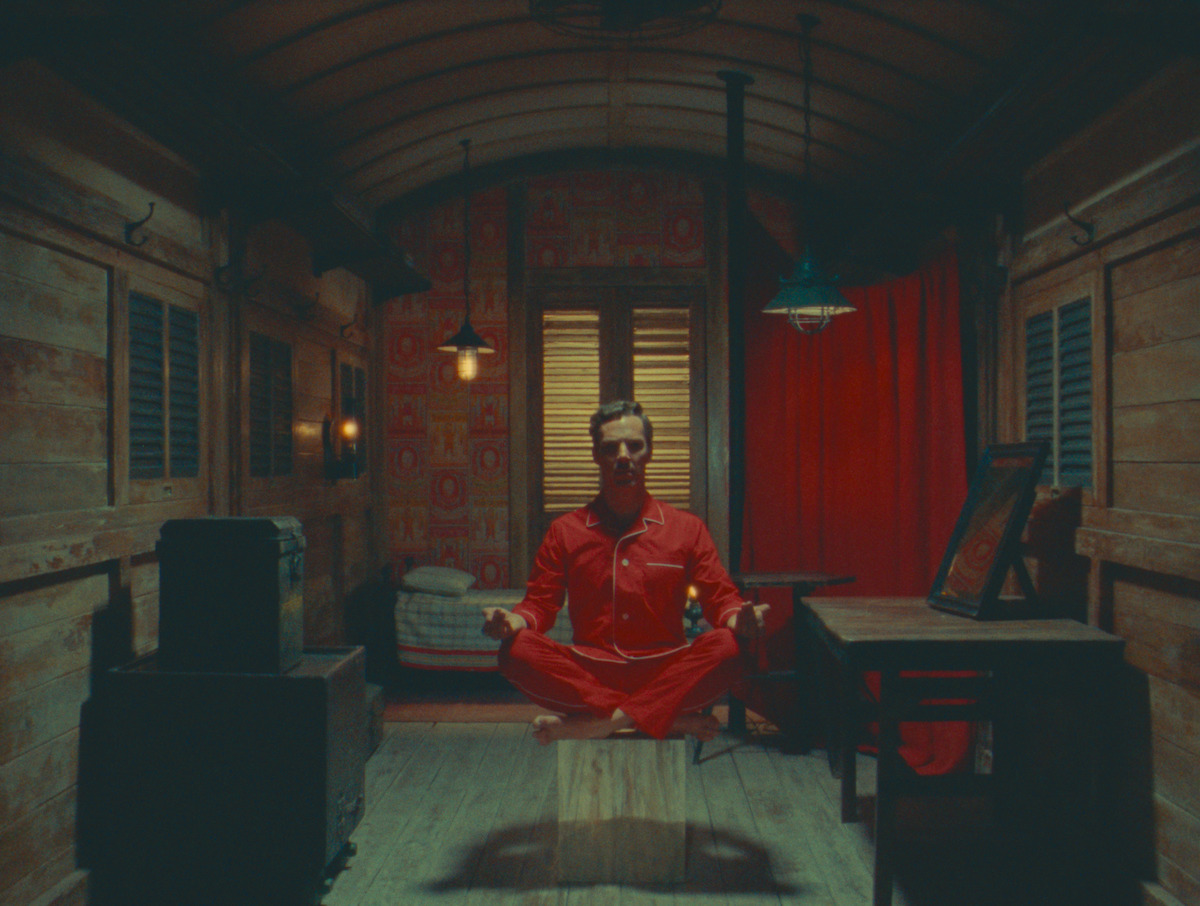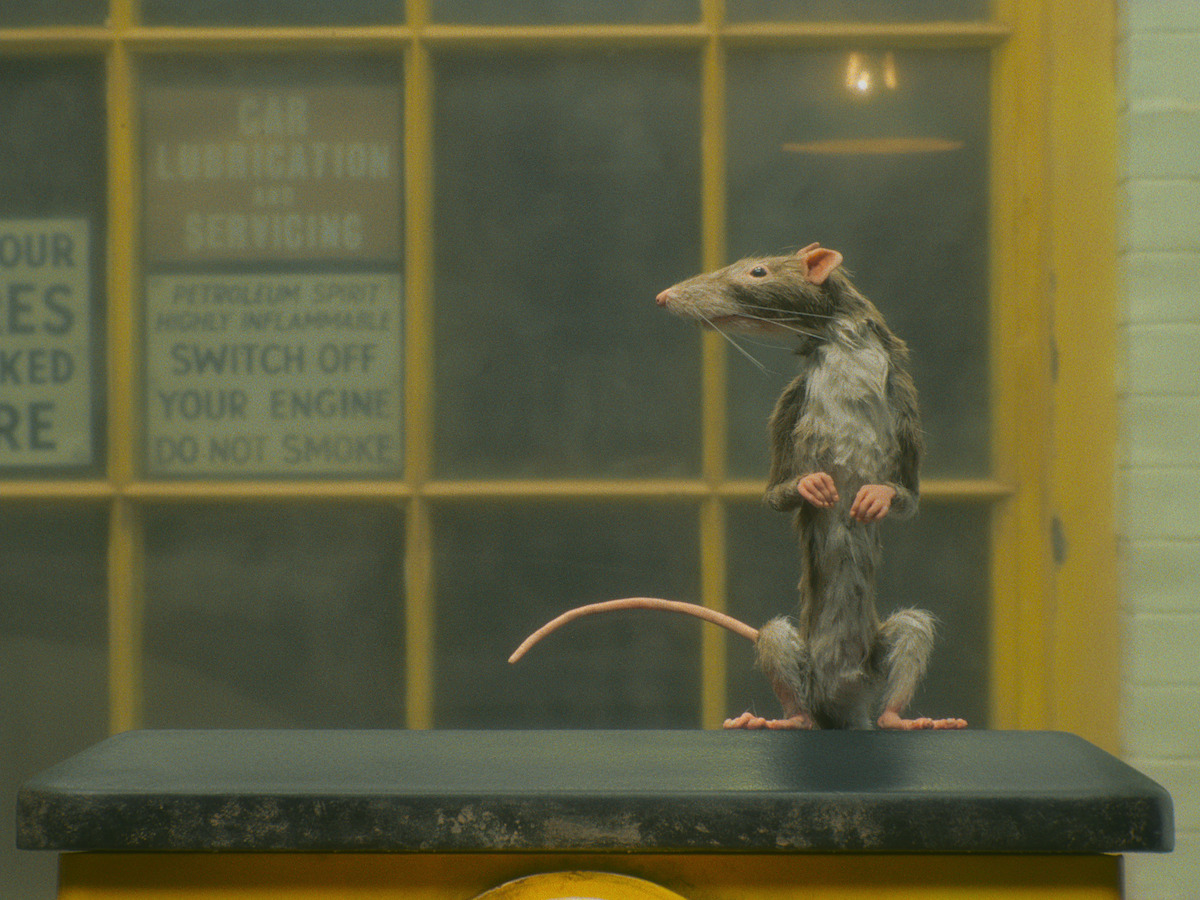Pastel Coloured Grotesque: Wes Anderson’s Roald Dahl Adaptations

Following June’s mixed reception to his latest feature film Asteroid City, Wes Anderson returns with a collection of shorts reviewed by Isabel Kilevold.
Fourteen years have passed since the pastel-coloured, symmetrically composed, and whimsical universe of Wes Anderson first merged with the extraordinary storytelling of Roald Dahl. Since the release of Fantastic Mr. Fox (2009), Anderson finally returns with another adaptation of Dahl’s work, this time with a quartet of intricate, quirky, and curiously grotesque short films.
Throughout the last week of September, the quartet was released one by one as part of a Netflix event. Although released separately, the individual pieces distinctly link with each other. The four short films all feature the same soft-hued colouring, hand-written typeface, and theatrical expression. The rotating cast of Benedict Cumberbatch, Dev Patel, Ben Kingsley, Richard Ayoade, Rupert Friend, and Ralph Fiennes only enhances the affiliation between the quartet. The latter featured in all films, Fiennes embodies the role of Dahl himself narrating the short stories.
The longest of the four, The Wonderful Story of Henry Sugar, was first premiered at the Venice International Film Festival. The 39-minute-long picture tells the story of Henry Sugar (Benedict Cumberbatch), a wealthy man who learns about a man who can see without using his eyes. He decides to acquire this skill himself so he can cheat at gambling. Although the film is less than 40 minutes long, it is rich in details. The visual design takes the audience on a journey – from Roald Dahl’s writing desk to yoga huts and London casinos. With his short film adaptation, Anderson manages to translate the warm, yet profound atmosphere of reading a Dahl novella to the screen.
Quoting Roald Dahl’s wording verbatim from beginning to end, Anderson explained his desire to use Dahl’s own words in the films as he is equally intrigued by the way Dahl tells the story as the story itself.
The three remaining films are only 17 minutes each. In contrast to their length, there is nothing lesser about them. With a minimalistic, yet characteristic storytelling style, Anderson manages to convey the peculiarity and complexity of Dahl’s tales in the abbreviated format of short films.
The Swan is the darkest story of the four, telling the gut-wrenching tale of a small boy brutally abused by bullies. Though the violence is not executed on screen, the way Rupert Friend narrates the story of childhood barbarism while looking directly into the camera sends shivers down the spine. Not even the pastel-coloured Wes Anderson aesthetic can conceal the heaviness of Dahl’s tale.

The revolting and, at times, purely grotesque story, The Rat Catcher, is one of Dahl’s lesser-known novellas. The short film features a local reporter (Richard Ayoade) telling the story about a professional rat exterminator (Ralph Fiennes). Fiennes’ rat exterminator has researched his prey to such an extent that he takes on the mannerisms of the creature. He executes the performance with such excellence the short film materialises as vile, yet curiously charming.
The last of the quartet to reach the streaming platform was Poison. The simplest of the four, the story depicts a man who discovers a poisonous snake asleep in his bed. Compared to most of Anderson’s work, which travels time and space, Poison can appear stagnant on first viewing. However, Anderson’s attention to detail, stylisation, and complex camera angles create an almost exhausting intensity. Poison proves his directing can do more than just appeal to the eye.
With the release of Asteroid City (2023) earlier this year, Anderson experimented with a theatrical approach to his filmmaking. The feature-length film tells the story of a play narrated by the playwright. This approach to narration is enhanced in his most recent short film quartet. Anderson is not afraid to break the fourth wall. The actors directly address the camera as they narrate the story. The stage play resemblance is emphasised by drawing attention to the transitions between locations, with set pieces moved into frame between the scenes. In The Rat Catcher, Fiennes acts as if he is holding an invisible rat, creating associations to pantomime.
Wes Anderson’s Roald Dahl adaptations are the closest realisation of visualised audiobooks. Wrapped in a beautiful cinematic experience are some of Anderson’s most disturbing subject matters. With the Roald Dahl short film collection, Wes Anderson proves that his aesthetic is persistently pleasing to the eye, yet all the more intriguing for the mind.
The collection of four Wes Anderson short adaptions of Roald Dahl were released starting on 27th September and available to stream now.
